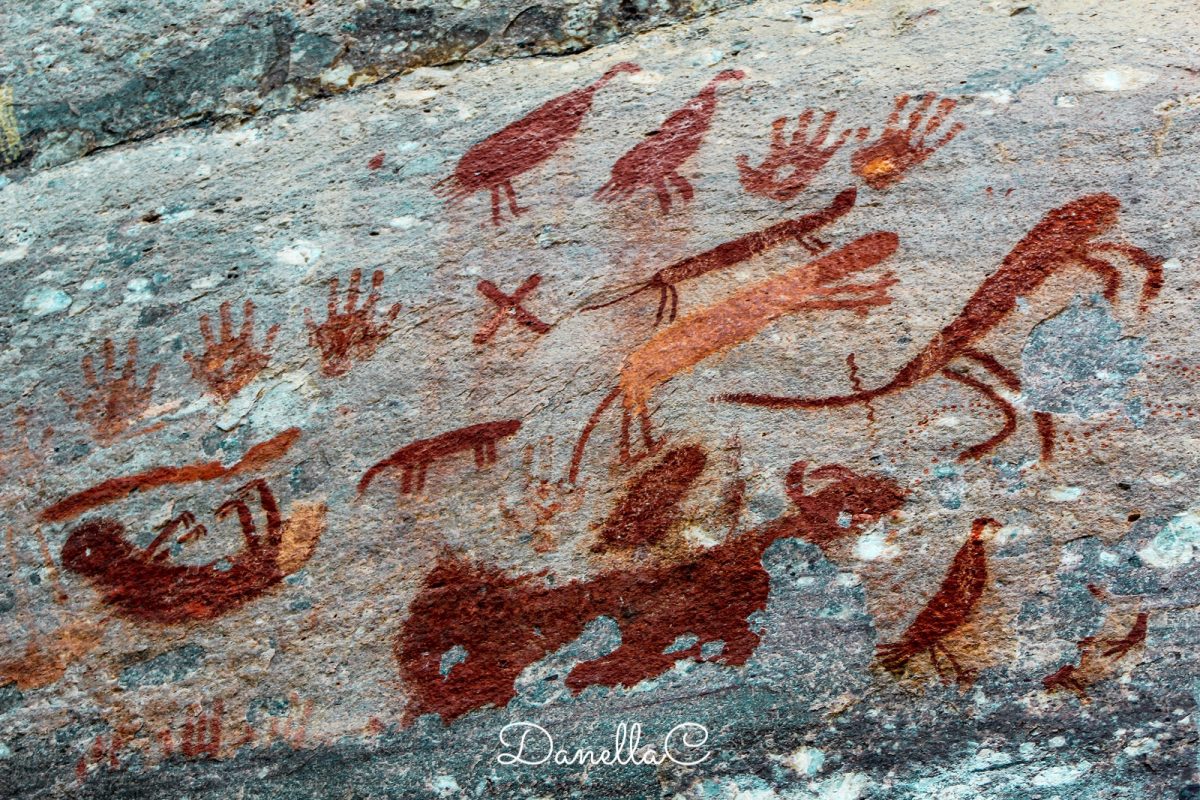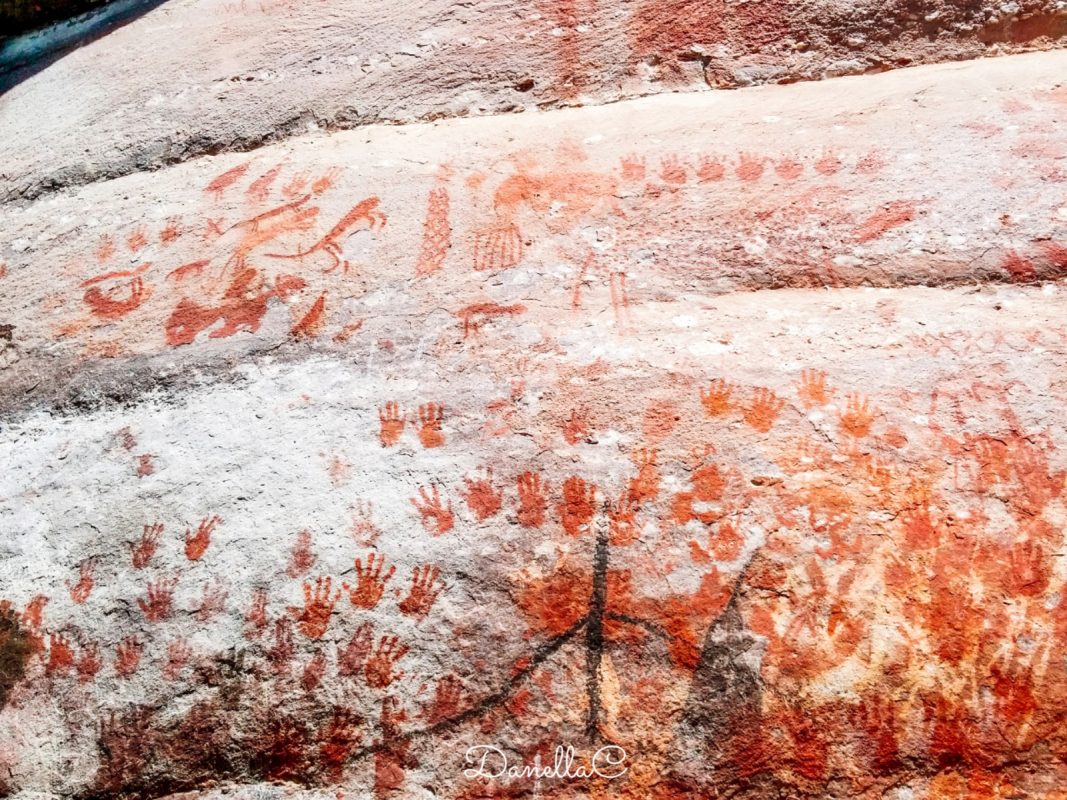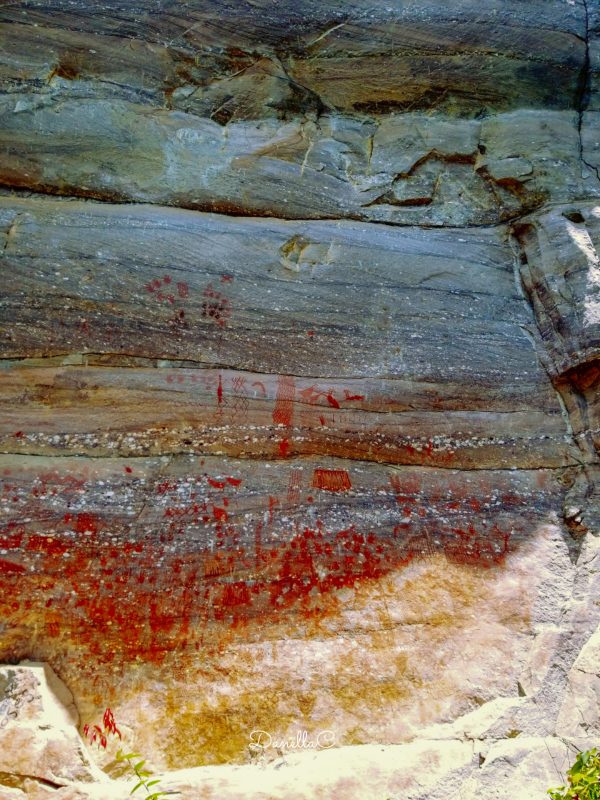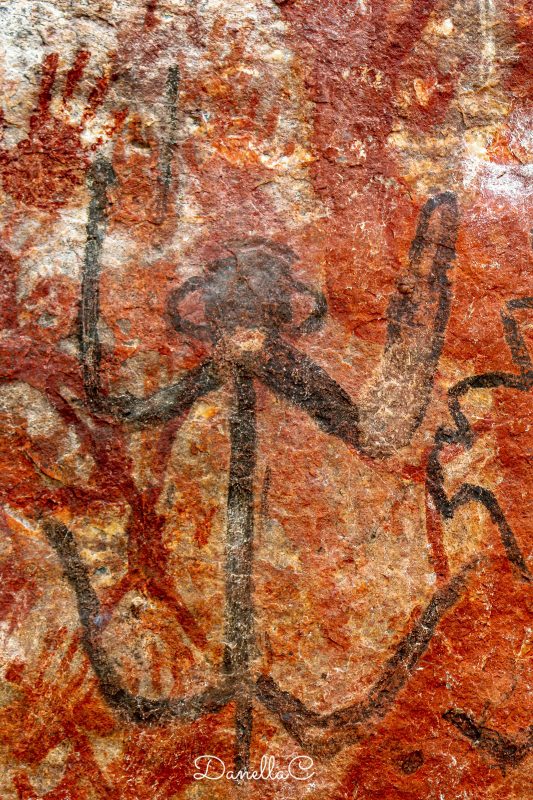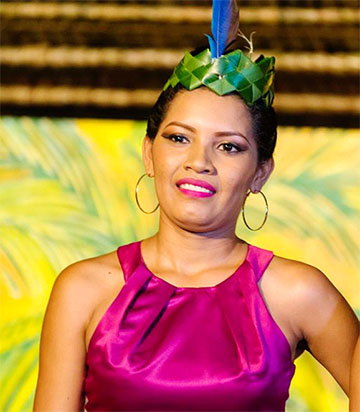In the Upper Mazaruni District, Region Seven, only three-and-half hours away from the Amerindian settlement of Imbaimadai, early indigenous paintings, which partially adorn the imposing mountain near Karowrieng and Maipuri Falls, are disappearing.
Various parts of the mountain wall are painted with various animals, symbols and signs which depict how the ancestors of the Akawaio tribe once lived.
In an interview, Azoney Clement, Vice-Toshao of Jawalla, revealed that the winds and rains have over the years weathered the paintings, some of which are now barely visible. In addition, she said, persons who have visited the site have left personal markings on the wall, which suggests that little value has been placed on what they represent—indigenous heritage. Clement, however, believes that the site warrants protection and preservation. “It is something that should be looked into, before it’s gone because by the time I have kids it won’t exist anymore,” Clement added.
In order to raise awareness about the paintings and the Akawaio history, Clement took 30 persons to visit the site last year. During the visit, she told the group about the history of the paintings and even taught them what some of the paintings meant. “My aim is to bring awareness to some significant meanings of our history that are not often highlighted throughout the country,” she commented.
For Clement, “it was a surreal experience” when she first visited the mountain, despite the fact it was an exhausting trip. However, upon her arrival there, Clement said, she was amazed that she was standing in the exact spot that her ancestors once did. “Looking at the paintings, I got an idea what their lifestyle was like and how they tried to be creative with their signs and symbols. I wanted to know more but the paintings only shared little information on what use to be their life,” she stated.
“My wish is for it to be preserved. The journey is very far and to have materials transported to preserve the paintings might be challenging and expensive but it’s something to look into,” she concluded.
Danella Clement, another visitor to the site who describes it as “phenomenal,” is also hoping to bring awareness to the destruction of the site. In the future, the 20-year-old wants to make the paintings a tourist attraction. “It deserves the recognition, with all respect and significance. I am very grateful I got the opportunity to visit and more so that children were also curious to learn their history. I felt connected and very thankful I got the experience. I wish our Guyanese people can get to experience more of the beauty our country has to offer,” she said.
Danella said according to legend, the “mysterious paintings” were stumbled upon by a Kopinang Piai man or shaman named Peter John during a trance, which was part of an ancient ritual. During the trance, he is said to have met another man, named Magonaima, also known as Makonaima and his family, who took John to the Mountain. Magonaima, who was riding a horse at that time, told John that the water was rising and invited him to join him and his family at their home in the Mountain. Further, he told John that “bad things” happen when the water rises and invited him to ride on his horse. Magonaima took John to the mountain, where John saw the paintings for the first time.
